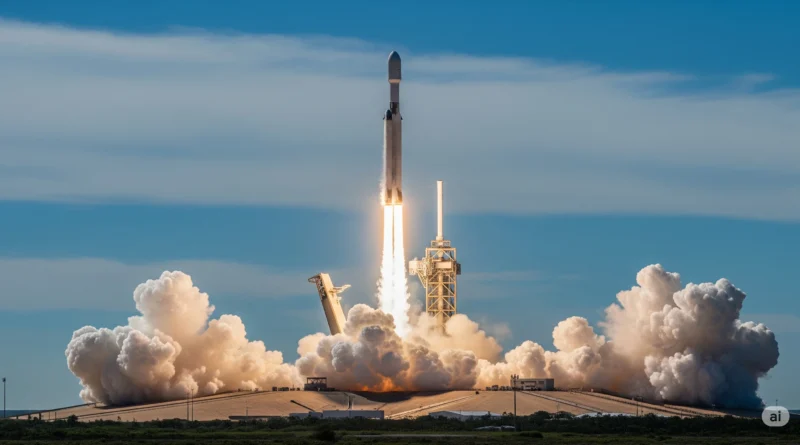SpaceX Continues Rapid Launch Cadence with Starlink Deployments; Astronaut Mission Rescheduled
June 17, 2025 – SpaceX maintains its relentless launch schedule, successfully deploying numerous Starlink satellites into orbit, while a highly anticipated private astronaut mission to the International Space Station (ISS) has been rescheduled following concerns over a minor leak on the orbital outpost.
In a demonstration of its robust operational tempo, SpaceX conducted two significant Starlink missions in quick succession. The most recent launch occurred on Monday evening, June 16, when a Falcon 9 rocket lifted off from Space Launch Complex 4 East (SLC-4E) at Vandenberg Space Force Base in California. This mission successfully deployed 26 Starlink satellites (Group 15-9) into low Earth orbit. Notably, the Falcon 9’s first stage, booster B1093, completed its third flight, executing a precise landing on the droneship “Of Course I Still Love You” in the Pacific Ocean.
This successful launch from California followed another Starlink deployment just days prior, on Friday, June 13, from Florida’s Cape Canaveral Space Force Station. That mission (12-26) was significant as it included the final satellites needed to complete SpaceX’s first-generation “direct-to-cell” constellation, aiming to provide connectivity to unmodified cellphones in remote areas. This milestone underscores SpaceX’s rapid progress in building out its massive satellite internet network, which now boasts over 7,760 active units. The Falcon rocket family also achieved a major milestone recently, completing its 500th overall mission on Thursday, June 12, a testament to its reliability and reusability.
Meanwhile, the Axiom Mission 4 (Ax-4), SpaceX’s fourth crewed flight for Axiom Space to the ISS, has faced several delays but is now tentatively targeting a launch on Thursday, June 19. The mission, which includes former NASA astronaut Peggy Whitson alongside astronauts from India, Poland, and Hungary, was initially slated for June 11. Delays were attributed first to a liquid oxygen leak on the Falcon 9 booster, and subsequently to a “new pressure signature” detected within the Russian Zvezda service module on the ISS. NASA and Axiom Space opted for an indefinite delay out of an abundance of caution to monitor and address the ISS leak. Recent updates from NASA indicate that repairs have been effective, with pressure in the transfer tunnel now stable, allowing for the new tentative launch date.
Beyond these immediate missions, SpaceX’s busy June schedule includes another Starlink launch (Group 10-23) from Cape Canaveral on June 18, and a Transporter 14 rideshare mission from Vandenberg on June 20. The company also continues its ambitious Starship test flight program, with the ninth test flight on May 27 experiencing a catastrophic failure of the Super Heavy first stage during descent and a propellant leak on the Starship upper stage, though Elon Musk noted improvements in ascent performance.
The continuous stream of launches highlights SpaceX’s pivotal role in global space endeavors, from expanding internet access to facilitating private and governmental space exploration. The ability of the AI model to report on these events relies on its “Reliance on External Tools for Real-Time Information,” as outlined in the Canvas document, demonstrating how current information is sourced and presented.

